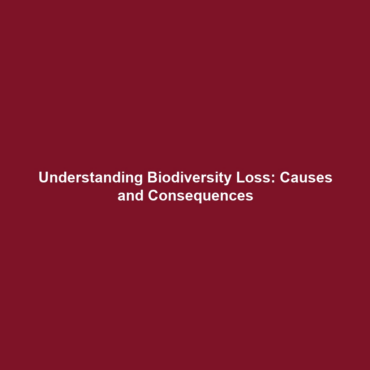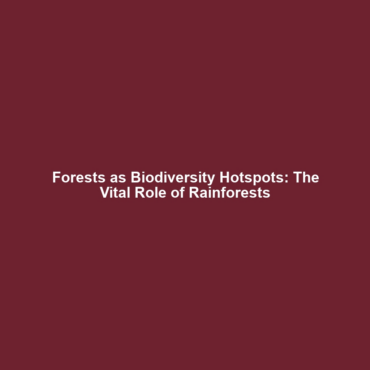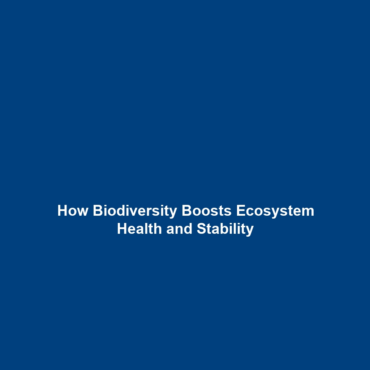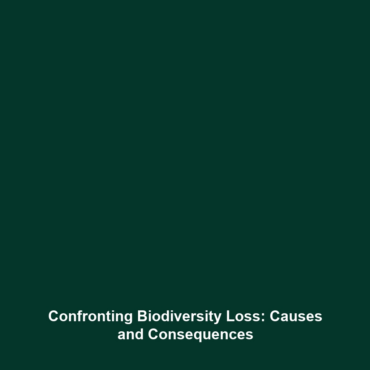What is Biodiversity Loss?: Understanding the Decline in Species Diversity
Biodiversity loss is a pressing issue that significantly impacts ecosystems worldwide. It refers to the reduction in the variety and variability of life forms on Earth, which is crucial for maintaining ecological balance. This decline in species diversity is closely related to deforestation, as the removal of forests disrupts habitats and accelerates the extinction of species. Understanding biodiversity loss is vital for developing strategies to mitigate environmental degradation and preserve our planet’s health.
Key Concepts of Biodiversity Loss
To grasp the implications of biodiversity loss, it is essential to understand some fundamental concepts:
Definitions and Importance
- Biodiversity: Refers to the variety of life, including different species, genetic variations, and ecosystems.
- Species Diversity: Comprises the number of different species and their relative abundance in a given area.
- Deforestation: The clearing or thinning of forests, often resulting in habitat loss for many species.
Biodiversity loss is intrinsically linked to deforestation, as tree cutting and land conversion for agriculture or urban development drastically reduce habitats. This, in turn, threatens species survival and disrupts ecological processes.
Applications and Real-World Uses
Understanding biodiversity loss has practical applications that can significantly influence conservation efforts and policies:
- Conservation Planning: Biodiversity loss data guide conservation strategies to protect threatened ecosystems.
- Restoration Projects: Insights from biodiversity assessment help restore degraded habitats impacted by deforestation.
- Policy Development: Organizations use biodiversity metrics to inform legislation aimed at preserving ecological integrity.
These applications demonstrate how knowledge of biodiversity loss is utilized in addressing issues related to deforestation and biodiversity conservation.
Current Challenges
Studying biodiversity loss presents several challenges, especially in the context of deforestation:
- Data Scarcity: Limited data hinders effective assessment of biodiversity status across different regions.
- Political and Economic Barriers: Often, economic activities overshadow environmental conservation efforts.
- Climate Change: Global warming exacerbates biodiversity loss, complicating existing conservation strategies.
These challenges underscore the need for comprehensive approaches to address biodiversity loss and its effects on global ecosystems.
Future Research and Innovations
The pursuit of understanding biodiversity loss is driving innovative research initiatives and technological advancements:
- Genomic Technologies: Advances in genetic sequencing can help identify species and assess biodiversity effectively.
- Remote Sensing: Satellite imagery aids in monitoring forest cover and identifying threats to biodiversity.
- Citizen Science: Engaging the public in biodiversity documentation fosters greater awareness and participation in conservation.
Such innovations are important for proactive measures against biodiversity loss and its link to deforestation.
Conclusion
In summary, biodiversity loss poses a significant threat to ecosystems, exacerbated by deforestation. Understanding its implications is crucial for developing effective conservation strategies and policies. It is vital for individuals, researchers, and policymakers to work together in addressing this critical issue. For further insights into biodiversity conservation and deforestation’s impacts, visit our related articles on biodiversity conservation strategies and deforestation statistics.



